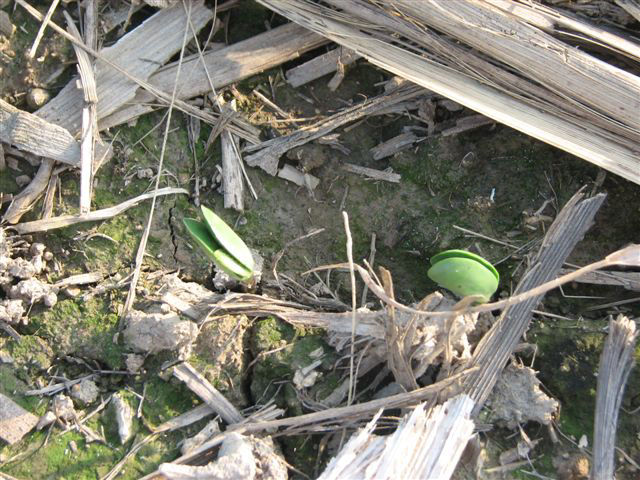It’s Cold, Should I Consider Planting My Soybean Crop First?
April 1, 2025
There are a multitude of benefits for planting your soybeans earlier than what is considered normal for a growing area. One of the biggest benefits for planting soybeans early is the value of maximizing yield potential. So, you have the planter hooked up and you are ready to go, should you consider planting your soybean crop first?
Yield Potential
Early planting research conducted by Iowa State University found that farmers can increase yield by 3 to 4 bu/acre by planting soybean beginning April 25th in southern regions and May 1st in northern regions of Iowa.1 Soybean fields with high yield potential may lose 0.3 to 0.7 bu/acre/day, with the largest yield reductions occurring when planted after May 10.1 Earlier planting often leads to earlier canopy closure, which enhances light interception which aids in higher yield potential due to increased rates of photosynthesis. Getting soybean seed planted, emerged, and off to a good start early can help lead to a long reproductive growth timeframe (Figure 1). This can increase the number of nodes per plant, leading to more flowers, pods, and seeds per acre. Flowering and harvesting times may be earlier, depending on how the growing season plays out.

Crop Insurance Dates
Since there is a positive response to planting early, state and federal crop insurance dates should also be considered for coverage benefits. Crops planted before the specified earliest planting date will not be eligible for replanting payments.
Soil Temperature and Frost Risk
When considering planting early, air and soil temperatures are typically lower than optimal. Although the ideal soil temperature for rapid soybean germination and emergence is between 77 °F and 86 °F, soybean seeds can germinate when the soil temperature is around 50 °F. Seed growth is slower at those lower temperatures which can lead to seedling death/stand loss, seedling disease, and higher insect pressure. Consider increasing the seeding rate slightly if planting early to help account for any potential stand loss. Also, take into consideration historical frost-free dates as well as looking into the future forecast to help ensure forecasted lows don’t dip too low and lead to a stand reducing frost. Using row cleaners can help ensure the planted row is free of residue which can help increase soil temperatures and the speed of emergence.
Seed Treatment
Seed treatment is helpful when planting early into cool, damp, soil conditions. Strong multi-mode of action fungicidal seed treatments such as Channel® Edge Offerings help protect seeds and seedlings against fungal pathogens that strike hardest when soils are cool and wet.* Pathogens such as Phytophthora, Pythium, Rhizoctonia, and Fusarium are the prime suspects. Soybeans that are slated to be planted in fields with a history of Sudden Death Syndrome (SDS) that are going to be planted early should be considered for a seed treatment that protects against SDS more specifically. An early planted soybean crop is also subject to flushes of belowground pests like seed corn maggot that can feed on the seed and seedling. After emergence, early planted fields are subject to bean leaf beetles in which a seed applied insecticide can help protect against early feeding. Channel® Edge Offerings can help protect yield potential when planting early. Treated seeds planted in cooler conditions tend to emerge and perform better than untreated seeds, emphasizing the importance of seed treatments in protecting against early-season pests and diseases.2
If conditions allow, the planting of soybean seed early is advisable and seed treatments can help mitigate the risks associated with cooler, wetter soils. For additional early soybean planting information, please see Five Years of Research Evaluating the Benefits of Early Planted Soybean.
*A small amount of Channel® brand soybean seed may be treated upstream in 2025 with Acceleron® Solutions Offering.
Lauren Botine, M.S.
Channel Agronomist
Sources
1Licht, M., Wright, D. and Lenssen, A. 2013. Planting soybean for high yield in Iowa. PM 3040. Iowa State University Extension and Outreach. https://lib.dr.iastate.edu/extension_ag_pubs/193.
2Ciampitti, I.A., Lancaster, S., Ruiz Diaz, D., Whitworth, R.J., Onofre, R.B., and Aguilar, J. 2024. Kansas soybean management 2025. MF3154. K-State Research and Extension. Kansas State University Agricultural Experiment Station and Cooperative Extension Service. https://bookstore.ksre.ksu.edu/pubs/kansas-soybean-management-2025_MF3154.pdf
Web sources verified 2/6/25 1110_497151
You may also like...
Here are some articles that may also be of interest to you